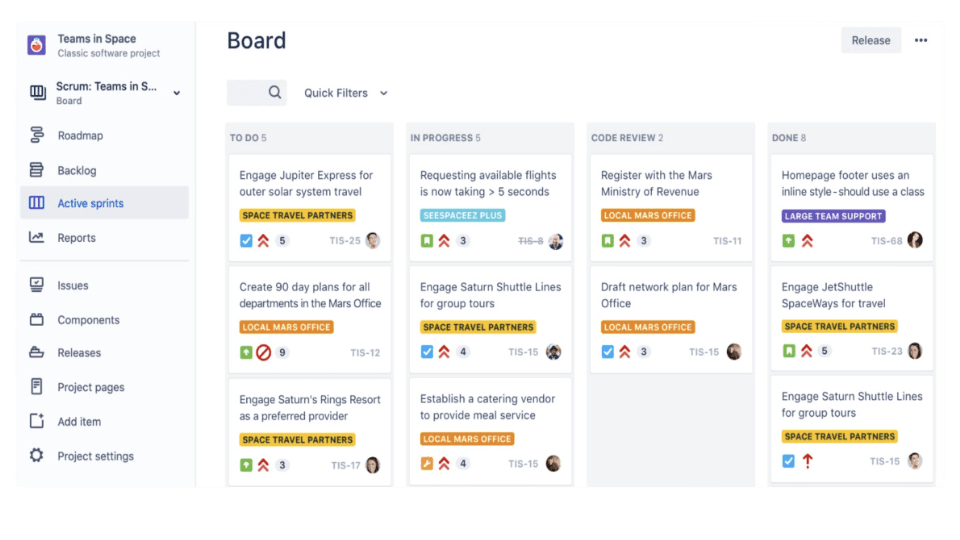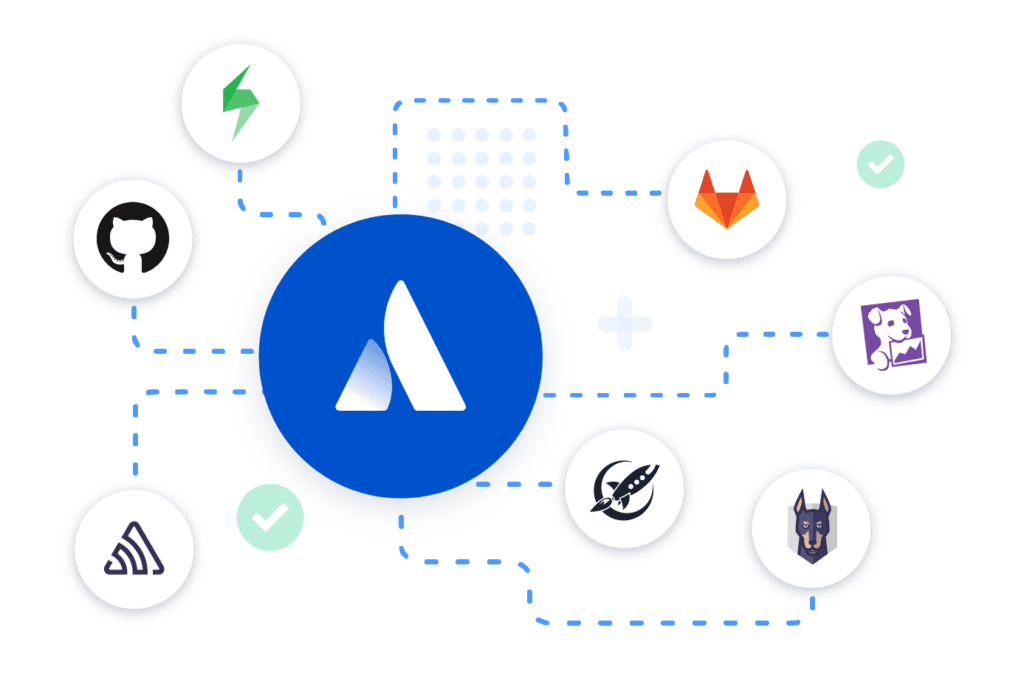Introduction
In today’s fast-paced digital world, effective project management tools are vital for ensuring success, especially for teams adopting Agile methodologies. Jira, developed by Atlassian, stands as one of the most popular project management platforms globally, particularly praised for its extensive features designed to support Agile workflows. First launched in 2002 as a bug-tracking software, Jira has since evolved into a comprehensive tool that caters to the needs of various teams, ranging from software developers to marketing and HR departments.

This review dives into the features, benefits, and potential drawbacks of Jira, offering you an in-depth understanding of its value. Whether you’re a developer, a project manager, or a team leader, this review will help you determine if Jira is the right tool for your project management needs.
Key Features of Jira
Jira offers a range of features that make it a robust platform for both technical and non-technical teams. These key features focus on facilitating Agile workflows, tracking issues, and integrating with various software solutions to support project management.
Agile Project Management
One of Jira’s core strengths lies in its ability to support Agile project management methodologies, making it ideal for both Scrum and Kanban workflows.
- Scrum Boards: These boards help teams run Agile sprints by providing a structured framework for project timelines and deadlines. Project managers can easily track the progress of tasks and adjust plans accordingly.
- Kanban Boards: Teams that prefer to visualize their work and monitor workflows in real-time can benefit from Kanban boards. These provide a clear snapshot of the project’s current status and help prevent bottlenecks by promoting task visibility.

Issue and Bug Tracking
Originally developed as a bug-tracking tool, Jira excels in managing issues and bugs, making it an essential tool for software developers. Every task or bug in Jira is categorized as an “issue,” which can be further broken down into smaller components to ensure that no details are overlooked.
- Customizable Issue Types: Jira allows users to create custom issue types to fit the specific needs of their projects, whether it’s a bug, feature request, or task.
- Priority Setting: Set priorities for tasks and bugs to ensure that the most critical issues are addressed first, improving the efficiency of your development cycles.

Roadmaps and Reporting
Jira’s roadmap feature provides a high-level view of your project’s goals, timelines, and dependencies, helping stakeholders visualize the progress and plan accordingly.
- Roadmap Feature: Offers a visual summary of your project, helping teams align on objectives and deadlines while maintaining a focus on critical tasks.
- Advanced Reporting: Jira includes over 15 types of real-time reports, such as sprint reports, time-tracking reports, and velocity charts, giving managers actionable insights into their team’s performance.

Integration with Popular Tools
Jira integrates seamlessly with over 3000 applications, including tools like Slack, Google Sheets, GitHub, Microsoft Teams, and more. This ensures that teams can continue using their favorite tools while benefiting from Jira’s robust project management features.

Customizable Templates
For users unfamiliar with project management tools, Jira offers pre-configured templates that help simplify project setup. These templates cover a wide range of use cases, from marketing and operations to HR and finance, making it easier for teams to get started.

Pros and Cons of Jira
Like any tool, Jira comes with its set of advantages and limitations. Understanding these can help you decide whether Jira is the right solution for your team.
Pros:
- Extensive Agile Support: Jira’s strong support for Scrum and Kanban boards makes it an ideal tool for Agile teams.
- Customizable Workflow: The platform offers extensive customization options, allowing teams to tailor workflows and issue types to their specific needs.
- Powerful Reporting Tools: Jira’s reporting features offer real-time insights that help teams track their progress and improve efficiency.
- Robust Bug-Tracking: Jira’s origins as a bug-tracking tool mean it excels in identifying, tracking, and prioritizing issues.
Cons:
- Steep Learning Curve: For non-developers, Jira’s interface and terminology can be challenging to grasp initially.
- Lack of Financial Features: Unlike some other project management tools, Jira does not offer budgeting or invoicing functionalities, limiting its use for financial tracking.
- Limited External Collaboration: While Jira is highly effective for internal teams, it’s less suited for managing projects with external collaborators or clients.
Pricing Overview
Jira offers a range of pricing options to cater to different team sizes and requirements, from small startups to large enterprises.

Free Plan
- Price: $0 for up to 10 users.
- Features: Basic project management tools, 2GB storage, and access to core Jira functionalities. Ideal for small teams or startups with fundamental project management needs.
Standard Plan
- Price: $8.15 per user/month.
- Features: Supports up to 35,000 users with enhanced permissions, 250GB storage, and additional reporting features. Suitable for growing teams that need more robust project management capabilities.
Premium Plan
- Price: $16 per user/month.
- Features: Adds advanced roadmaps, global automation, and multi-project management. This plan is ideal for large organizations with complex project requirements.
Enterprise Plan
- Price: Custom pricing upon request.
- Features: Designed for enterprises needing unlimited users, advanced security features, and dedicated support. This plan is best suited for organizations with highly complex project management needs.
Ideal Use Cases for Jira
Jira is a versatile tool, and its capabilities make it ideal for various use cases across different industries. Below are a few examples of how Jira can be applied effectively:
- Software Development: Jira remains a top choice for development teams due to its issue-tracking, bug-fixing, and Agile support capabilities.
- Service Management: Customer service teams can use Jira Service Management to track and resolve issues, providing quicker solutions to clients.
- HR and Marketing: Jira Work Management allows HR teams to manage recruitment and onboarding, while marketing teams can track campaigns and deliverables.
Comparison with Other Tools
Jira vs. monday.com
- User-Friendliness: While Jira is more suited for software developers and Agile teams, monday.com offers a simpler, more intuitive interface, making it easier for non-technical teams to adopt.
- Agile Support: Jira excels in supporting Agile methodologies with features tailored to Scrum and Kanban, while monday.com is more flexible for general project management tasks.
Jira vs. Notion
- Customization: Notion is a more flexible tool, offering broader customization options for various types of projects, while Jira is more focused on software development and Agile teams.
- Collaboration: Both tools support collaboration, but Jira’s extensive issue-tracking and Agile support give it an edge in more technical project environments.
Jira vs. Wrike
- Project Views: Wrike offers Gantt charts and timeline views, which some teams may prefer for managing project dependencies, while Jira focuses more on Agile methodologies with Scrum and Kanban boards.
- Price: Wrike’s pricing tends to be higher, but it includes advanced reporting and comprehensive views, which may appeal to teams requiring detailed project tracking.
Conclusion
In conclusion, Jira is a highly customizable and feature-rich tool that excels in supporting Agile methodologies for software development and other collaborative projects. While it may take some time to master for non-developers, the investment in learning the platform pays off with powerful project management capabilities and real-time insights.
Whether you’re a small startup just getting started or a large enterprise managing complex projects, Jira’s tiered pricing plans and robust feature set make it a worthwhile investment. Start with the Free plan to explore its functionalities, and as your needs grow, consider upgrading to the Standard, Premium, or Enterprise plans.
